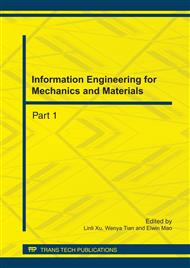p.100
p.104
p.108
p.113
p.119
p.123
p.128
p.133
p.137
Effects of Ti(C,N) Nanoparticles on Mechanical Properties of the Si3N4 Ceramics
Abstract:
Si3N4-Ti(C,N) nanocomposites fabricated by vacuum hot pressing with Al2O3 and Y2O3 as additives were investigated. The results showed that the α-Si3N4 phase converted completely into whisker-shaped β-Si3N4 grains after vacuum sintering at 1700°C. Suitable addition and well dispersion of the Ti(C,N) particles can restrained the lateral growth of the β-Si3N4 grains, increasing aspect ratio of the β-Si3N4 grains and improving bending strength of the composites. Fracture toughness of the composites is higher than that of the β-Si3N4 ceramics, and the main toughening mechanism is crack bridging due to the higher aspect ratio of the β-Si3N4 grains.With the addition of 1vol% of Ti(C,N), the composite has a relative density of 99.31%, Vicker’s hardness of 15.9 GPa, bending strength of 993 MPa, and fracture toughness of 9.9 MPa·m1/2.
Info:
Periodical:
Pages:
119-122
Citation:
Online since:
July 2011
Authors:
Keywords:
Price:
Сopyright:
© 2011 Trans Tech Publications Ltd. All Rights Reserved
Share:
Citation:


